From Stanley cups to Samsung phones, this duo launches almost anything into space. Here’s why.
It began like many seemingly crazy ideas do: With two friends talking at a bar.
Or, in the case of U.K.-based Alex Baker and Chris Rose, at a pub.
One night in 2010, the two mechanical engineering Ph.D. candidates at the University of Sheffield met up for a pint or two to blow off the steam that comes with the rigors of pursuing a doctorate. At some point in the evening, Baker and Rose began idly discussing the idea of launching a balloon into space with a camera onboard to capture a sweeping panorama of Earth.
What began as a theoretical conversation over drinks took hold of the pair, who decided to put the idea to the test. Months of research and experimentation led Baker and Rose to the moment on a December day later that year of their inaugural launch.
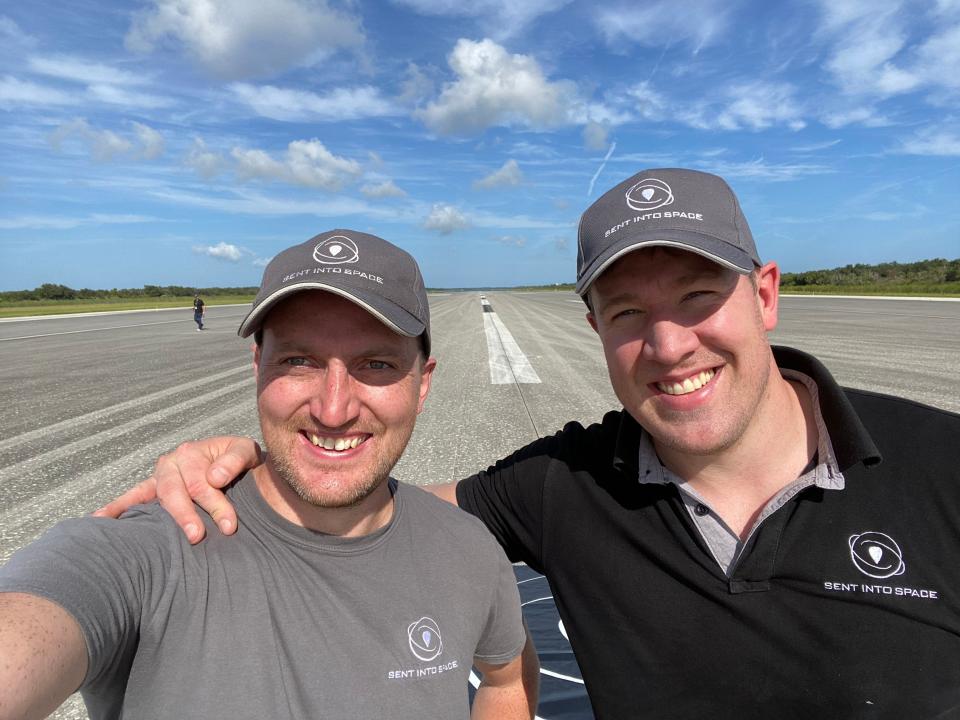
Needless to say, the launch – which took place in the backyard of Rose's family home – would not be their last.
For 13 years, Rose and Baker have steadily made a name for themselves as the guys whose company, Sent Into Space, will happily launch pretty much anything into near-orbit – as long as it doesn't have a heartbeat. And their daunting launch schedule and prestigious list of clients – from Samsung to Adult Swim – are a testament to one thing: It's a good business to be in.
"If you condense it down to a few words, it's just launching things into space," Baker told USA TODAY. "But we try to make things happen that have never happened before."
Commercial space travel: Calif. man says Virgin Galactic spaceflight was 'dream of a lifetime'
Stanley Cups, chicken nuggets, among objects sent to space
When the image Rose and Baker captured in 2010 and the story behind their early flights went viral, it wasn't long until marketing executives and educational institutions took notice.
By the time Sent Into Space was officially incorporated in 2011 as a business, the pair had already received an influx of requests from prospective clients clamoring for their own launches. For Rose and Baker, the high demand for their services was confirmation that the hard work to make the launches feasible had paid off.
"We worked very well together and we were very hungry for it," said Baker, 39, who now serves as the company's chief technical officer.
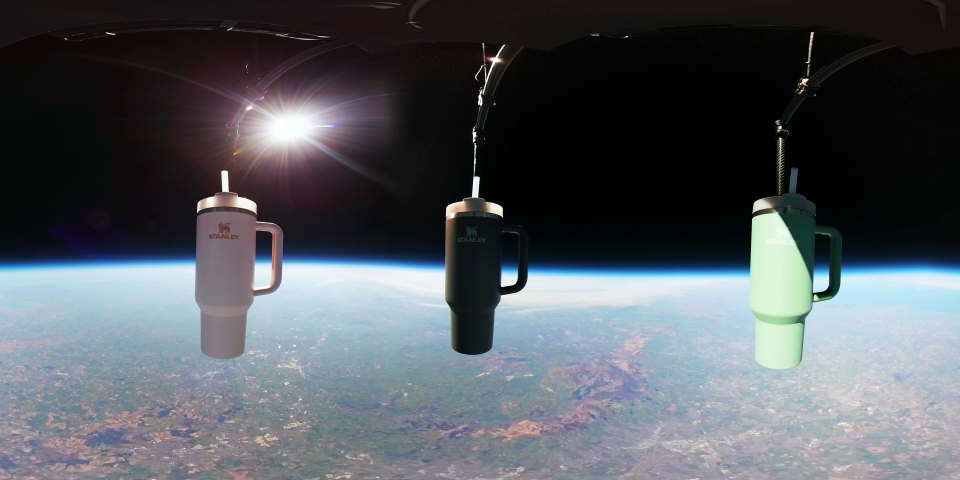
More than a decade later, Sent Into Space has partnered for marketing campaigns, music videos and scientific research on more than a thousand flights.
Some of these projects simply involve taking photos or footage from high above Earth for documentaries and other projects. But what Sent Into Space is perhaps best known for is, well, sending stuff to space.
Over the years, Sent Into Space has overseen launches of Stanley cups, chicken nuggets, Barbie dolls, Jameson whiskey, a 7-Eleven Slurpee and even artwork for a celestial exhibition. The company's clients then use the resulting cosmic imagery or videos in marketing campaigns that Rose and Baker boast often go viral on social media.
"Sometimes it's the absurdity of the product in space that lends itself to the viral success of that company," Rose, 38, the company's head of projects and business development, told USA TODAY.
How the launches work
Early on, Rose and Baker knew they'd have to develop a reliable method to get a camera to and from space if they had any hope of making the business profitable.
Before their first launch, they extensively looked into ways to track a helium balloon into space and how to make use of weather prediction software to model its path up and back down. They also made sure to insulate the camera system contained within a cargo attachment so it could survive the frigid conditions of outer space.
Communications technology allows a ground crew to track the vessel and send radio signal commands to the contraption to record or take photos before falling back to Earth.
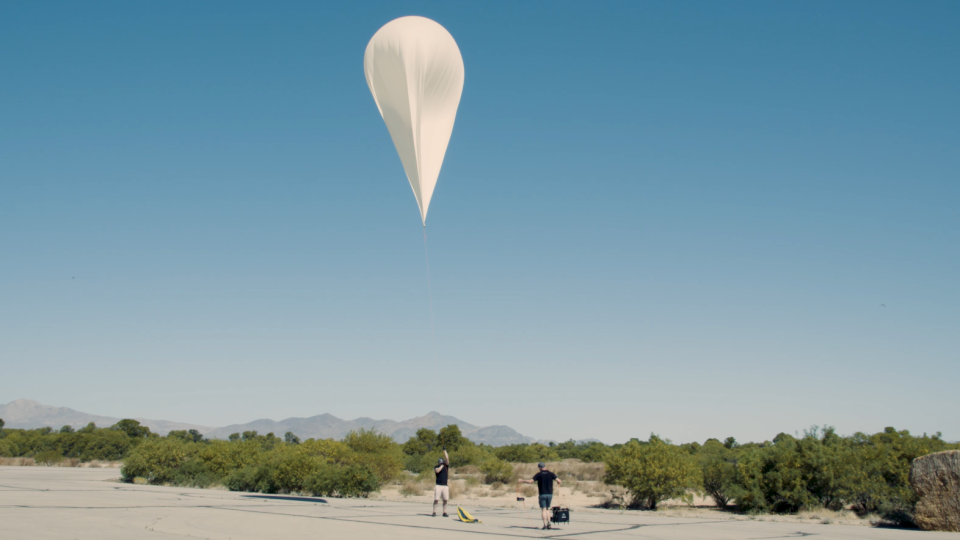
The helium inside the balloon is lighter than air, creating lift that carries the craft into "near space," a region well below the 62 miles above Earth where it would enter orbit, according to NASA. Low-earth orbit, where many satellites reside, is no more than 1,200 miles high.
As the balloon rises, the pressure change causes it to expand until it’s about 82 feet in diameter, according to the company. When the balloon is unable to expand any further, it bursts, causing the spacecraft to parachute back to Earth at a calculated landing location.
On average, the whole journey take no more than three hours, during which time the craft reaches an altitude of about 20 miles – which is still plenty high enough for the thin blue line of Earth's atmosphere to be visible.
Amid the commercial space age, Sent Into Space has few competitors
The rising success of Rose and Baker's company comes at a time when the commercial space age is only just dawning.
Billionaire-owned companies like Rich Branson's Virgin Galactic have begun selling tickets for short rides to outer space to customers with deep pockets and adventurous spirits. Meanwhile, private aerospace companies like Elon Musk's SpaceX are increasingly partnering with NASA on missions that ultimately aim to return American astronauts to the moon.
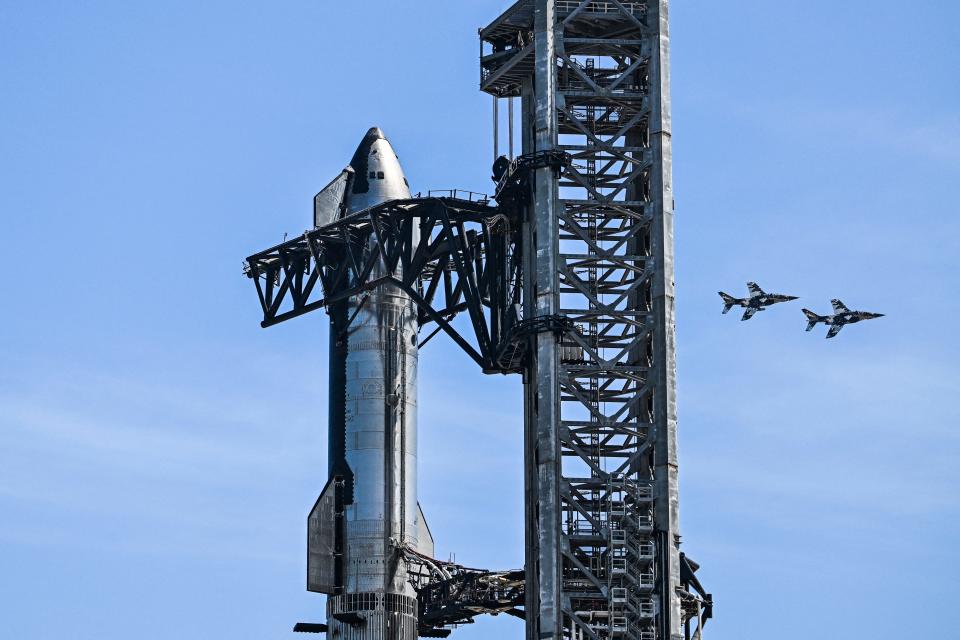
Just last week, the U.S. space agency announced the three companies it hired to compete to create viable designs for a lunar rover that could be used in missions as early as 2029. One of the companies chosen was Houston-based Astrobotic, which in February landed the first-ever privately-built uncrewed lander on the moon.
But Rose and Baker are happy to let their would-be competitors reap the profits from human space tourism and million-dollar NASA missions. After all, they've carved out quite a profitable little niche of their own.
"We don't really have anybody doing anything like we do," Rose said. "We're certainly the specialists."
Partnerships with Samsung, Adult Swim, among recent highlights
Sent Into Space now has about 30 employees to help conduct up to eight flights to the upper stratosphere per week.
The company recently wrapped up a project with Samsung for the release of the new Galaxy S24. The results of the partnership, which involved taking photos from space in January using mobile handsets from around the country, could be seen last month in Times Square in New York City.
As a result of the partnership, Samsung said it noticed a 20% increase in social media mentions regarding the new device.
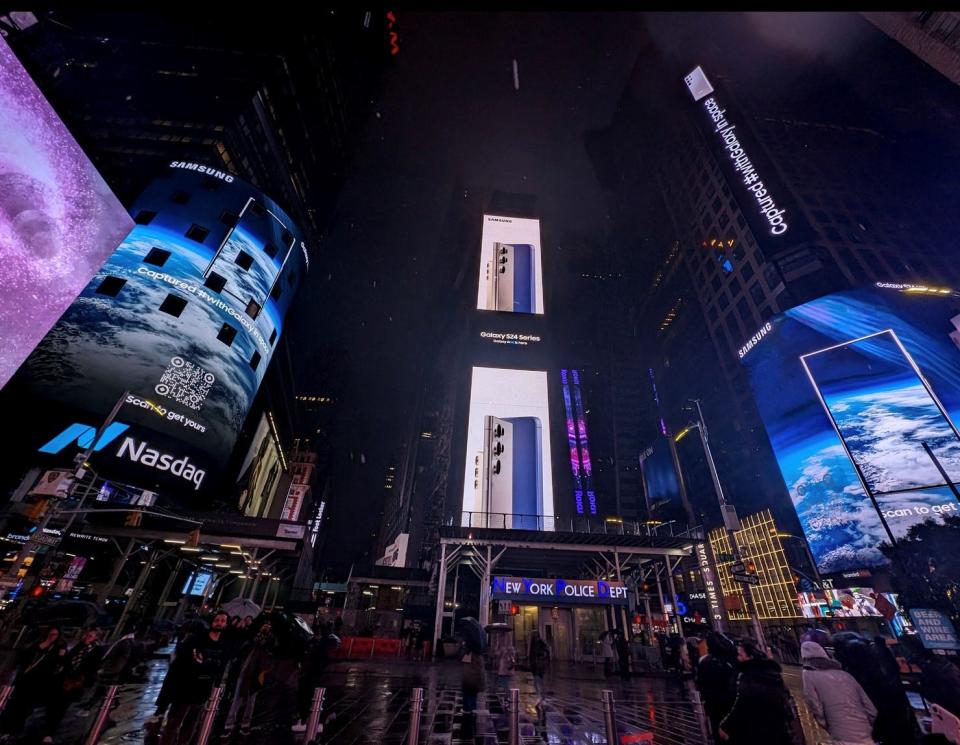
"We wanted to take it another step or two to highlight the incredible zoom capabilities from even further away, to showcase the limitless possibilities on our device," Jacs Wyatt, Samsung’s head of digital marketing and social commerce, told USA TODAY. "Extra bonus was the fact they were able to retrieve our devices without a scratch."
One of Rose's favorite partnerships was one from about three years ago with a betting company in which he said Sent Into Space helped execute the world's first bet in space.
The concept involved a simple coin flip, but taken to astronomic heights as the object fell all the way from near space to Earth. At the same time, a robot placed its bet on the outcome while hovering high above the ground, Rose explained.

One of Sent Into Space's other more well-known projects involved a partnership with Adult Swim on its animated series, "Rick and Morty."
Ahead of the 2021 Season 5 premiere date of the popular show, Baker and Rose's team created a miniature replica of the title duo's spacecraft to launch into space from Nevada. Figurines of the characters then watched the episode above our planet.
Did Rose and Baker ever think such a mission would be conceivable when they hatched their wild scheme all those years ago at an England pub? Definitely not.
But it's just this sort of out-of-the-box thinking that excites Rose and Baker to keep pushing the limits with each subsequent launch.
"Every day it seems we're creating something that could be a world's first or a world record," Rose said, "which is amazing motivation."
Eric Lagatta covers breaking and trending news for USA TODAY. Reach him at [email protected]
This article originally appeared on USA TODAY: Sent Into Space: How this company photographs products in near-orbit
